This week has seen a whole raft of meetings rather than events, but I thought I would mention that Dr Andrew Richardson will be giving the joint FCAT and Centre talk on Thursday 13 May at 7pm using Zoom. It is open to people beyond the Friends of Canterbury Archaeological Trust using: https://zoom.us/j/99561251187?pwd=Rkc1Zkh5Z1pQVnV3cVk5Z0RFVnlJZz09 and if you enjoy it, please consider becoming a Friend of the Trust. Here is the link to the Trust’s website: https://www.canterburytrust.co.uk/
Andrew will be speaking on ‘Eanswythe Found?’. For those of you unfamiliar with this Anglo-Saxon saint, she was the daughter of King Eadbald of Kent (r. AD 616/18–640) and thus the granddaughter of King Æthelberht. Even though disentangling the historical Eanswythe from the legend is not the issue here, it had long been suggested that the human bones found near the altar during alterations in 1885 at the parish church of St Mary and St Eanswythe in Folkestone might be the lost relics of St Eanswythe, founder and abbess at the 7th-century minster there. As a leading member of the team of researchers from CAT with CCCU and many others, Andrew will offer a full account of the evidence along with his view as to whether Eanswythe really has been found. It promises to be a very interesting lecture.
Another equally fascinating event will be taking place on Tuesday 25 May when the Centre will be hosting an ‘In Conversation with Marc Morris’ event at 7pm. This follows the publication of Marc’s new book on The Anglo-Saxons. A History of the Beginnings of England, which will be available from the CCCU Bookshop from 20 May, pre-publication ordering is also possible at: https://bookshop.canterbury.ac.uk/
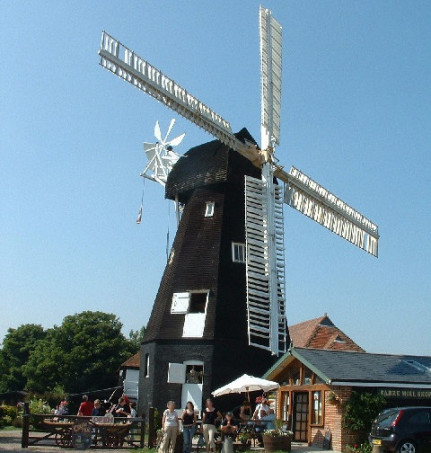
The ‘In Conversation’ event is free, no booking required and this is the Teams joining link: https://teams.microsoft.com/l/meetup-join/19%3ameeting_MjI5YThhZTItMWUwZC00YjhjLTlmZjItOTQwODlkMzcwYTFh%40thread.v2/0?context=%7b%22Tid%22%3a%220320b2da-22dd-4dab-8c21-6e644ba14f13%22%2c%22Oid%22%3a%225438ffb7-ff66-44f6-9ccf-cf504309571b%22%2c%22IsBroadcastMeeting%22%3atrue%7d&btype=a&role=a
For those of you unfamiliar with Teams Live Events, you are three clicks away from entering the Teams Live Event (instructions courtesy of KAS): as soon as you click on the link or open it in your browser – if you do not have Teams installed, firstly click ‘cancel’ when it prompts you to open Microsoft Teams; second, select ‘Watch on the web instead’, finally select ‘watch anonymously’ unless you have a Teams or Microsoft account. You will see the event has started or be told, it has not started yet. If the latter, wait for the event to start. There is no limit to the number of times you can retry to enter.
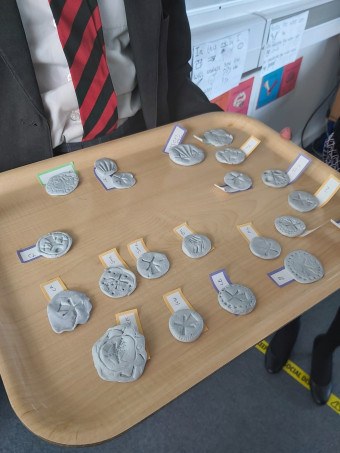
In some ways returning to the Lossenham project and the wills group, I thought I would just mention that several people from the Lenham and Charing area have shown an interest in this topic and the skills needed to work with old documents. Consequently, I’ll be meeting them on Zoom tomorrow to explore how they want to take this forward. This is an exciting development because it highlights the value of collaboration across the county among local historians and others, as well as an appreciation of gaining skills and the excitement of being able to work on manuscript sources.
Keeping with the idea of the meeting of different constituencies to further community and heritage group projects, Dr Claire Bartram and I joined Dr John Bulaitis (History, CCCU), several from the local parish councils, and other interested representatives, as well as the Rev. Dr Lesley Hardy and Andrew Richardson (CAT) for a meeting about conditions on Three Barrows Down in Womenswold. In a very collegiate atmosphere, those present discussed the current state of the three barrows, the environmental and man-made issues they are facing and how mitigating effects might be introduced at this Scheduled Monument. Moreover, it was felt that the importance of this prehistoric burial site should be better known and understood, and thus thinking about issues surrounding curation, interpretation and public information are key features. By the end of the meeting the next issues that should be tackled had been decided, which will place the community centre stage, a stance everyone agreed was key to the project’s success.
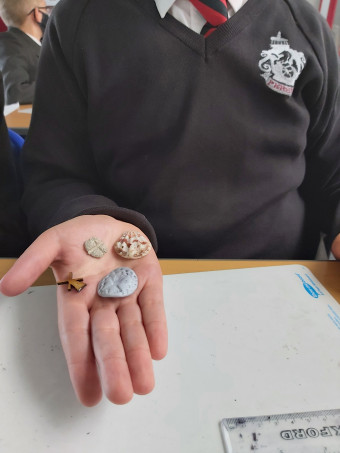
I’ll be attending a not dissimilar meeting on Friday, albeit the Delf Trust in Sandwich is further down the road in terms of its aims and objectives in seeking to protect and promote this fascinating medieval watercourse. More on this in future weeks for this, too, is very exciting because findings from the different research strands will become available to residents and visitors to Sandwich and its hinterland, as well as even further afield through the project’s website.
Now almost to the ‘medieval rebels’, although before that I just want to mention that Dr Diane Heath will again be at the Royal Harbour Academy, Ramsgate, on Friday, but this time with the Year 8s who had been studying the times of Queen Elizabeth I. Without giving anything away, I hope, Diane will be using the Casket Letters and resources from The National Archives. In many ways, the relationship between Elizabeth and her cousin Mary, Queen of Scots is one of the most intriguing relationships during the period, as demonstrated by Dr Amy Blakeway’s lecture at Tudors and Stuarts 2021 just over a month ago: https://blogs.canterbury.ac.uk/kenthistory/tudors-and-stuarts-2021/ . Moreover, Diane and the students will be focusing on one especially grisly event in Mary’s life, the murder of Darnley and, as well as active listening, there will be a creative element to the workshop.
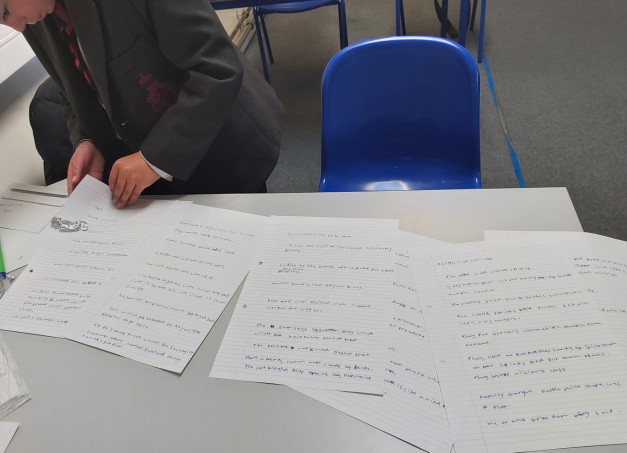
It really is the ‘medieval rebels’ this time and these Year 7 students had a brilliant time last week learning about the Peasants’ Revolt or what should more accurately be called the English Rising because the rebels were a mix of townspeople and their rural neighbours, and the revolt was not confined to the counties around London. This workshop followed on from their learning about the Black Death, although, of course, that was only the start of a series of plague outbreaks, which in broad terms occurred at a national level of severity about one per decade from c.1350 to c.1500, and even beyond, having a catastrophic effect on the population and altering radically the balance between labour supply and demand, whatever the late 14th-century government might seek to enforce through the Statute of Labourers and other legislation.
The Year 7s were focusing on the events of June 1381, especially those involving the Kentish rebels, including people from Thanet, who with their peers from Essex marched or, if Professor Nicholas Brooks was right, rode towards London and the events at Blackheath and Mile End. This distinction is interesting because again it gets away from the idea of ‘poor peasants’ in that they had horses – horse ploughing having been an early development in large parts of Kent, and that they were well organised, probably appropriating the local and regional systems of government of the tithing (borgs in Kent) and hundred.
Moreover, for these students the potential ages of the protagonists on both sides might be said to have extra appeal because on one side there was the boy king, Richard II, and on the other some of the rebels may have been lads aged twelve, who were viewed as of age to take on adult responsibilities as part of their local community (tithing). Of the adults on either side, there was Archbishop Sudbury, one of the key government officers hated by the rebels as the architect of the third poll tax, and John Ball, seen as a renegade priest and a rebel leader by the royal authorities.
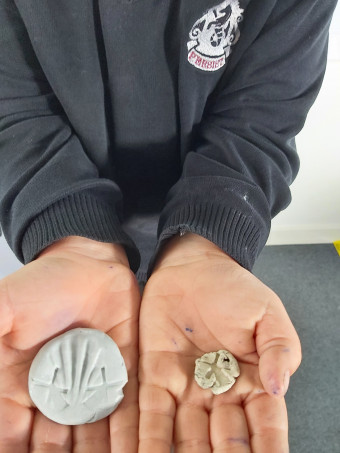
I’m going to leave Sudbury and concentrate on John Ball because as you will have seen the students’ creative talents were utilised by Diane in the making of badges showing a windmill. Indeed, even those students who started with a shell badge wanted a windmill too. Now those of you who have ever looked at John Ball’s letters will know that he was very keen on the mill as a symbol of society for ‘Iakke Mylner asket help to turne hys mylne aright’ because he could point to the idea of the need for all the mill sails to work together in harmony: ‘Loke ƿi mylne go aryȝt wiƿ ƿe foure sayles, and ƿe post stande in stedefastnesse’. And here we come to the cruck of Ball’s metaphor of the four sails: ‘Wiƿ ryȝt & wiƿ myȝt, Wiƿ skyl and wiƿ wylle, Lat myȝt helpe ryȝt, And skyl go before wille, And ryȝt before myȝt, Þan goth oure mylne aryght’ for under such circumstances the corn could be ground, and thus the first stage of the daily bread and a staple of life in a world without rice, pasta and potatoes! Such ideas seem deceptively simple but that makes them memorable and for these Year 7s it is possible Diane’s workshop will have given them an insight into the world of 1381, as well as that of 2021, with the image of the windmill remaining a potent symbol of how society can work inclusively and harmoniously. For the rest of Ball’s verse shows what happens when this doesn’t happen and thus as one student put it, ‘the rebels stood up for what they believed in’.
Next week I hope to bring you news of Dr Claire Bartram’s successful grant applications, as well as reports on the Lossenham project, the Faversham Magna Carta exhibition project and the Kent History Postgraduates, another bumper week in prospect!
 Centre for Kent History and Heritage
Centre for Kent History and Heritage Sheila Sweetinburgh
Sheila Sweetinburgh 1583
1583

